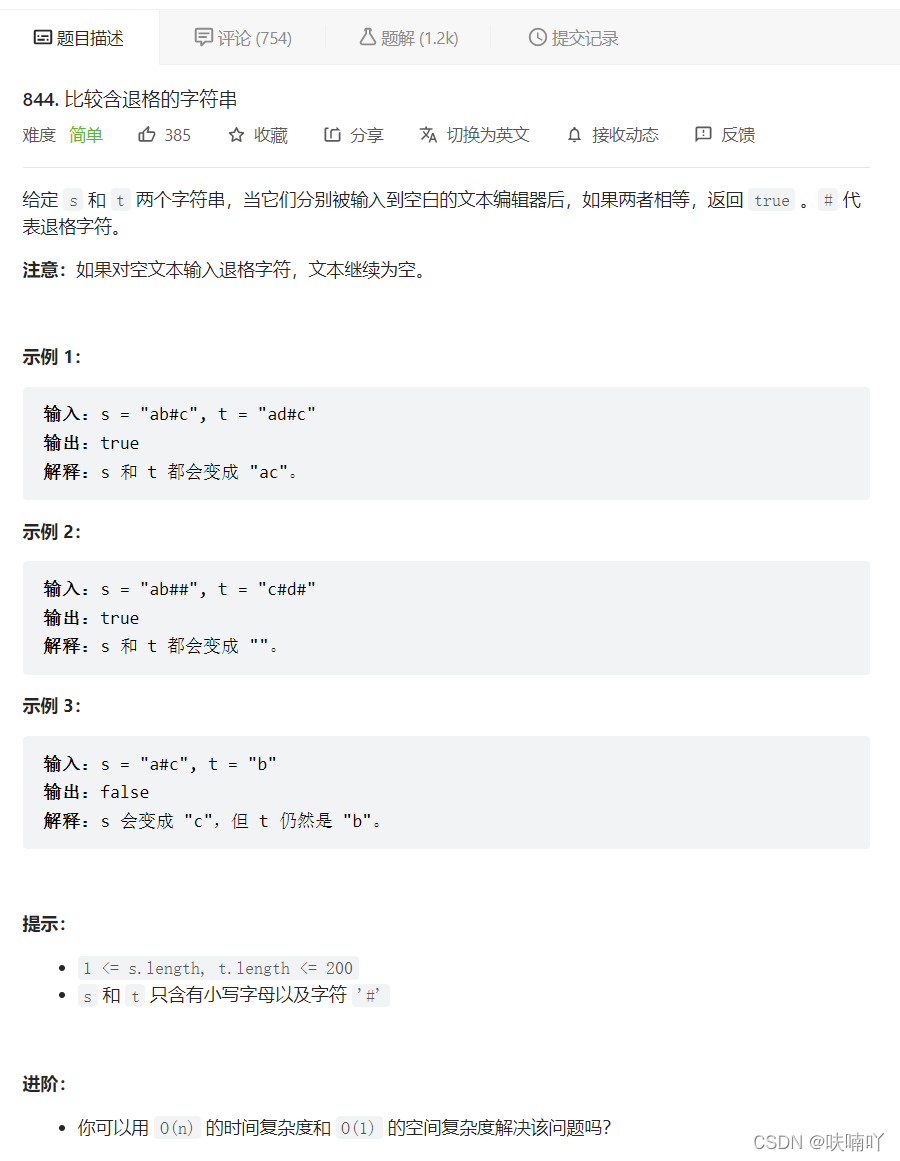844. 比较含退格的字符串
思路–双指针
准备两个指针 endS, endT 分别指向 S,T 的末位字符,再准备两个变量 countS,countT 来分别存放 S,T 字符串中的 # 数量。
从后往前遍历 SS,所遇情况有三,如下所示:
1 若当前字符是 #,则 countS 自增 1;
2 若当前字符不是 #,且 countS不为 0,则 countS自减 1;
3 若当前字符不是 #,且 countS为 0,则代表当前字符不会被消除,我们可以用来和 T 中的当前字符作比较。
若对比过程出现 S, T 当前字符不匹配,则遍历结束,返回 false;
若 S,T 都遍历结束,且都能一一匹配,则返回 true;
若S, T长度不一,则表示匹配失败,返回true;
class Solution {
public:
bool backspaceCompare(string s, string t) {
int endS = s.size()-1;
int endT = t.size()-1;
int countS = 0;
int countT = 0;
//找#同时去除#,比较不是#就开始比较字符
while(endS >=0 || endT >=0){
//找S字符串的#号,同时消除
while(endS >= 0){
if(s[endS] == '#'){
countS++;
endS--;
}
else if(countS > 0){
countS--;
endS--;
}
else{
break;
}
}
//找T字符串的#号,同时消除
while(endT >= 0){
if(t[endT] == '#'){
countT++;
endT--;
}
else if(countT > 0){
countT--;
endT--;
}
else{
break;
}
}
//退出上面两个循环,判断是否为长短不一的字符串,或者是否为同时结束字符串
if(endS < 0 || endT < 0)
break;
//匹配字符
if(s[endS] !=t[endT]){
return false;
}
else{
endS--;
endT--;
}
}
//这是同时退出字符串的情况,也就是同时匹配完
if(endS <0 && endT< 0){
return true;
}
//这是长短不一的情况
return false;
}
};
